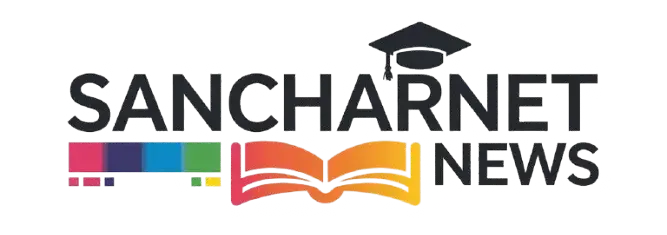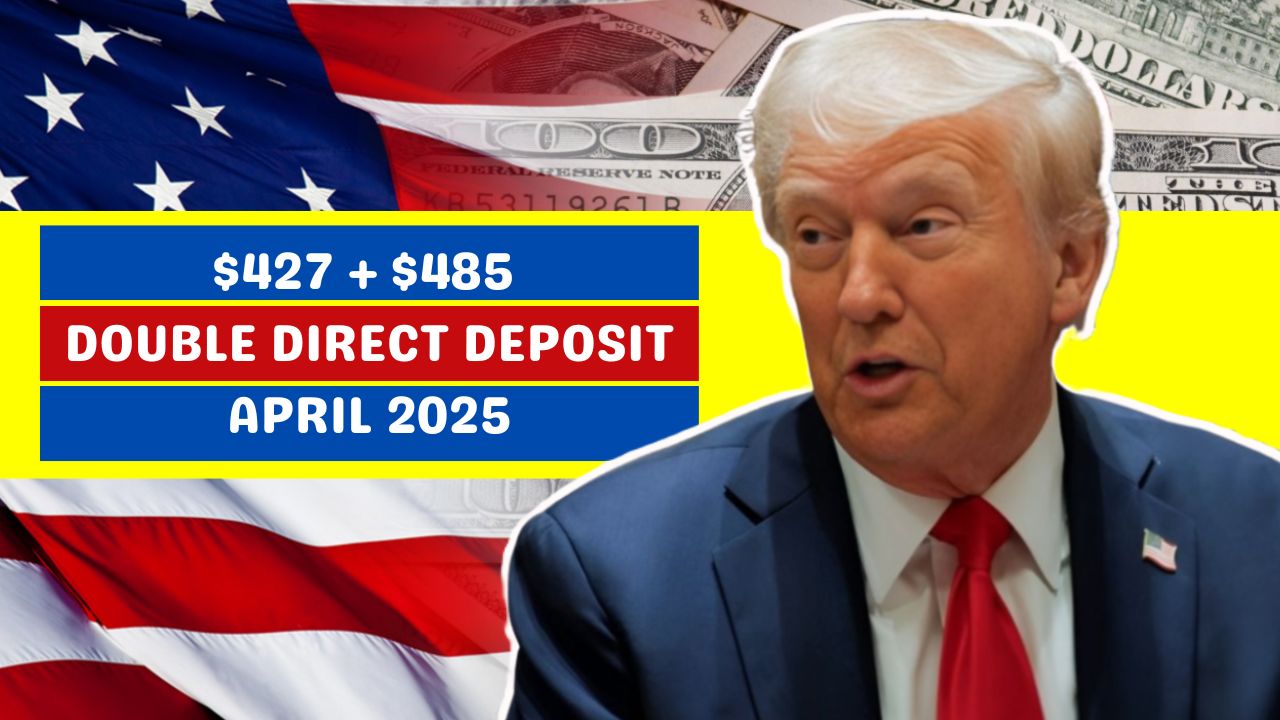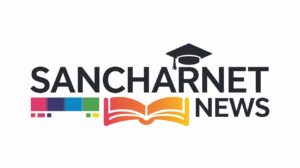$427 + $485 Double Direct Deposit April 2025: For countless numbers of people, a direct deposit in April 2025 promises to be the first step toward financial relief. Eligible individuals would receive two payments totaling $427 and $485, for a total of $912. In order to properly manage personal finances, it’s critical to stay informed about the status and timing of these payments. Regardless of whether the person is anticipating a direct deposit or verifying their eligibility, checking the payout status in advance would guarantee that the money arrives on time because this double deposit is eagerly anticipated. In any event, it’s critical to understand these payments.
April 2025 brings welcome financial relief for eligible recipients through a special double direct deposit program. Qualifying individuals will receive two separate payments of $427 and $485, totaling $912 in additional support. This initiative aims to provide targeted economic assistance during a time when many households continue to face financial challenges. Understanding eligibility requirements, payment schedules, and how to maximize these benefits is essential for recipients.
$427 + $485 Double Direct Deposit April 2025
| Feature | Details |
| First Payment | $427 direct deposit |
| Second Payment | $485 direct deposit |
| Total Benefit | $912 in April 2025 |
| Eligibility | Income thresholds, benefit enrollment status |
| Distribution Method | Direct deposit to registered accounts |
| Expected Dates | Early and mid-April 2025 |
| Required Action | Verify account information by March deadline |
Double Direct Deposit Program
The Double Direct Deposit initiative represents a targeted economic support measure designed to provide immediate financial assistance to qualifying individuals. This April 2025 program delivers two separate payments—$427 and $485—directly to recipients’ bank accounts, creating a substantial combined benefit of $912.
These payments come at a critical time when many households continue to manage rising costs across essential expense categories including housing, food, and healthcare. The program aims to provide temporary relief while supporting broader economic stability goals.
MP Free Laptop Yojana 2025 – CM transferred ₹224 crores for Laptop to students!
UP Scholarship Status 2025 for Post-Matric and Pre-Matric – Check login & renewal procedure
Double Direct Deposit $427 + $485 Payments
There are two distinct deposits from the April 2025 payment: $427 and $485. Eligibility requirements and the planned time frame determine the payment guidelines. In order to prevent payment delays, recipients should verify the status of their deposits. It is anticipated that these payments will be deposited in a straightforward way, allowing qualified recipients to easily access the money they are entitled to.
People can check the status of their payments using the monitoring and tracking systems that the authorities have put in place. They can increase transparency, allowing beneficiaries to know exactly when they will receive their money. It is preferable to contact the payment service provider if there are any problems with member helpfulness.
Can Anyone Participate in the Double Deposit?
A number of factors, including income level, prior involvement in government assistance programs, and current, updated banking information, will determine eligibility for the $427 and $485 payments. Prior to the planned payment date, payments should be verified for eligibility.
Those who previously received the same type of direct payments are probably going to continue to do so in the future. However, that payment may be impacted by recent changes in account status and finances. By keeping everything up to date, needless delays can be avoided.
Check Your Pay Status Online
Beneficiaries can use the official online portals or get in touch with their individual financial institutions to monitor the status of their double deposits. The majority of payment systems give their users access to real-time updates, enabling them to see when their money will be credited.
Verifying the deposit details by logging on to the relevant payment website is advised. To prevent issues, any disparities should be reported right away. Look for any processing delays if a payment does not show up on the scheduled date.
Timetable for Payment and Processing
The precise timing of the $427 and $485 deposits will be determined by the processing times that financial institutions have set. Deposits are typically credited a few days following their planned release date. Beneficiaries should thus keep a careful eye on their accounts during the anticipated payout period.
It is reasonable to assume that recipients of direct deposits will typically get their money sooner than others. Additionally, it may take a lot longer for the paper check to arrive if it is subject to this. Receivers can be better prepared if they know what might cause delays and how long it would take.
Who Qualifies for the Double Payments?
Eligibility for the April 2025 double direct deposits centers on several key criteria:
Income Requirements
Recipients must fall within specific income thresholds that vary based on:
- Household size
- Filing status (single, married filing jointly, head of household)
- Adjusted gross income from most recent tax filing
For most individuals, income limits are set at:
- Single filers: Annual income below $75,000
- Head of household: Annual income below $112,500
- Married filing jointly: Annual income below $150,000
Benefit Program Enrollment
Automatic eligibility extends to individuals currently enrolled in certain federal benefit programs:
- Social Security retirement benefits
- Supplemental Security Income (SSI)
- Social Security Disability Insurance (SSDI)
- Veterans benefits recipients
- Participants in specific income support programs
Residency and Filing Requirements
Recipients must:
- Be U.S. citizens or qualifying residents
- Have filed required tax returns for recent tax years
- Maintain current address and banking information with relevant agencies
Payment Schedule and Delivery Method
The double payments follow a specific distribution timeline in April 2025:
First Payment: $427
- Distribution begins: April 3, 2025
- Most recipients receive by: April 10, 2025
- Payment identifier: “APR2025-ASST1” in banking transactions
Second Payment: $485
- Distribution begins: April 17, 2025
- Most recipients receive by: April 24, 2025
- Payment identifier: “APR2025-ASST2” in banking transactions
Delivery Methods
While direct deposit serves as the primary distribution method, offering the fastest access to funds, alternative arrangements exist for those without banking information on file:
- Direct deposit: Funds available same-day or next-day after distribution
- EIP debit cards: Mailed to eligible recipients without banking information
- Paper checks: Limited availability, significantly longer delivery timeline
How to Maximize Your Double Direct Deposit?
Recipients can make the most of their $912 in supplemental payments through strategic planning:
Financial Priorities
Consider allocating portions to:
- Outstanding essential bills (utilities, housing, medical)
- High-interest debt reduction to improve long-term financial health
- Emergency savings to build financial resilience
- Necessary purchases previously deferred due to budget constraints
Complementary Resources
Enhance the impact of your payments by connecting with:
- Financial counseling services offering free guidance
- Community assistance programs for specific needs
- Benefit optimization services to ensure you’re receiving all eligible support
Tax Implications
Understanding the tax status of these payments helps with financial planning:
- The April 2025 double direct deposits are classified as non-taxable income
- Recipients do not need to report these payments on subsequent tax returns
- The payments do not affect tax credits or deductions for which you might qualify
Conclusion
The April 2025 double direct deposit program delivering payments of $427 and $485 represents a significant support measure for eligible recipients. With a combined benefit of $912, these supplemental funds arrive at a time when many households continue navigating financial challenges. By understanding eligibility requirements, payment timelines, and strategies to maximize these benefits, recipients can make the most of this assistance.
For those expecting these payments, taking proactive steps to verify information, understand potential impacts, and guard against related scams ensures smooth receipt of these important financial resources. While these payments provide temporary relief, connecting with broader financial support systems and planning for efficient use of these funds creates the most substantial positive impact for recipients and their families.
Frequently Asked Questions
Will I receive both payments if I qualify?
Yes, eligible recipients will receive both the $427 and $485 payments automatically without needing to apply separately for each.
What if I don’t receive one or both payments?
If you believe you’re eligible but don’t receive a payment by April 30, 2025, contact the dedicated payment resolution hotline or use the online payment tracer tool.
Can I receive these payments if I get my regular benefits by paper check?
Yes, though direct deposit recipients typically receive payments faster. Your supplemental payments will arrive through the same method as your regular benefits unless you specifically update your preference.
Will these payments affect my tax refund for 2025?
No, these supplemental payments are separate from tax refunds and will not impact your tax return processing or refund amount.
Do I need to spend these payments in a specific way?
No, recipients have complete discretion regarding how they use these funds based on their individual financial needs and priorities.
What if my income has changed since my last tax filing?
Eligibility is typically based on your most recently processed tax return. If your income has decreased significantly, making you newly eligible, special provisions may apply—check with the administering agency.
Can dependents or children receive these payments?
The payments are designed for qualifying adults. In some cases, eligible adults may receive additional amounts for qualifying dependents under specific programs.







